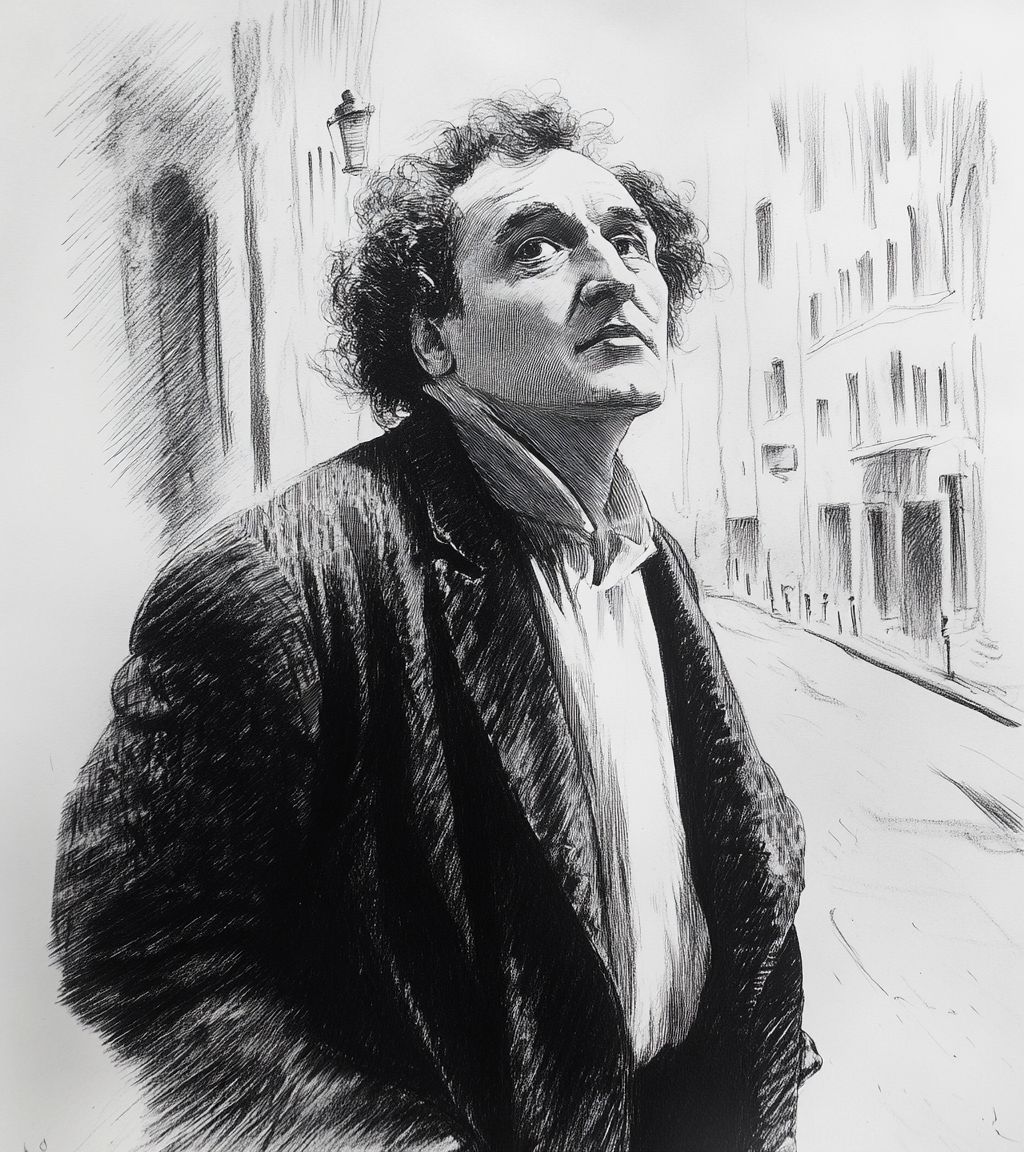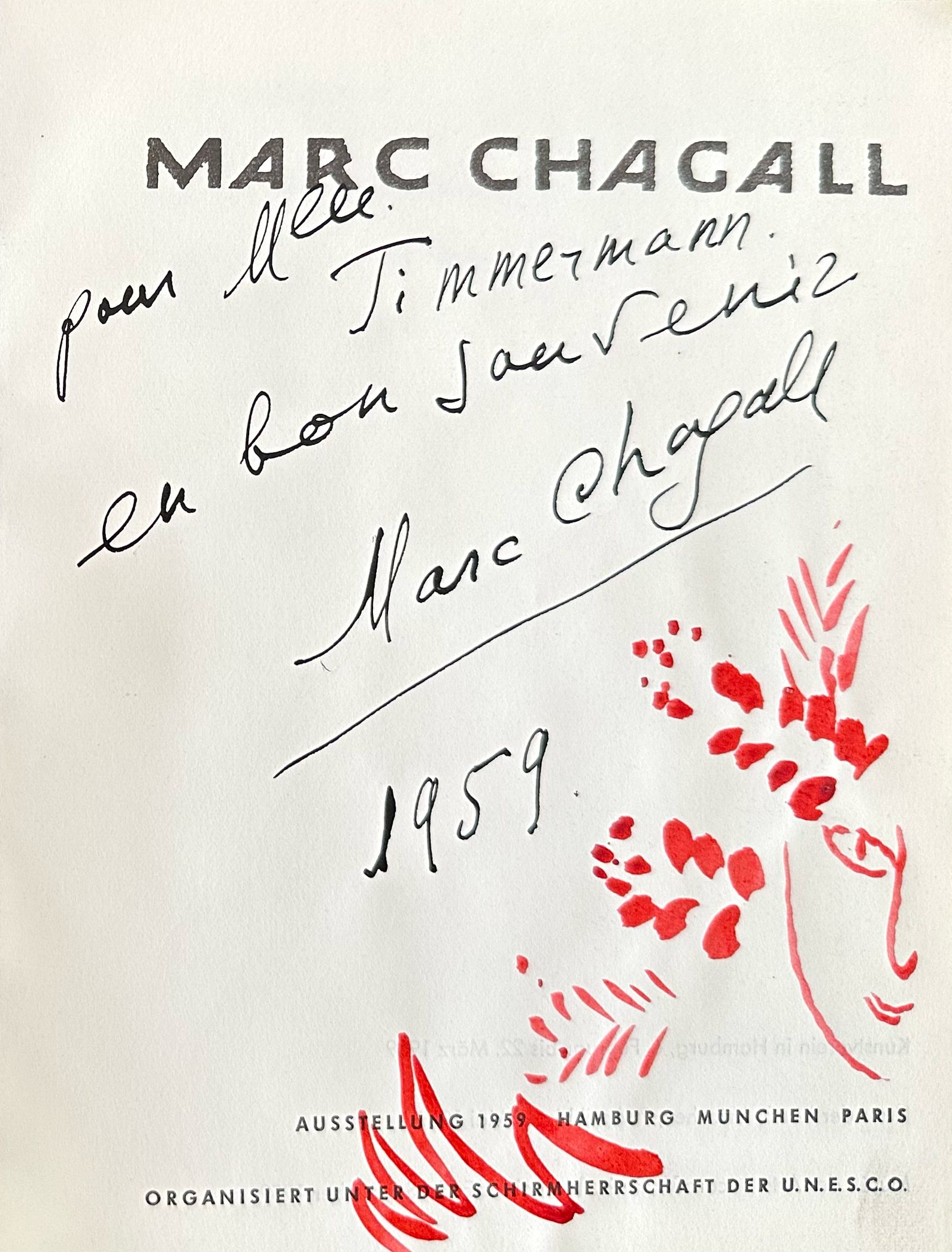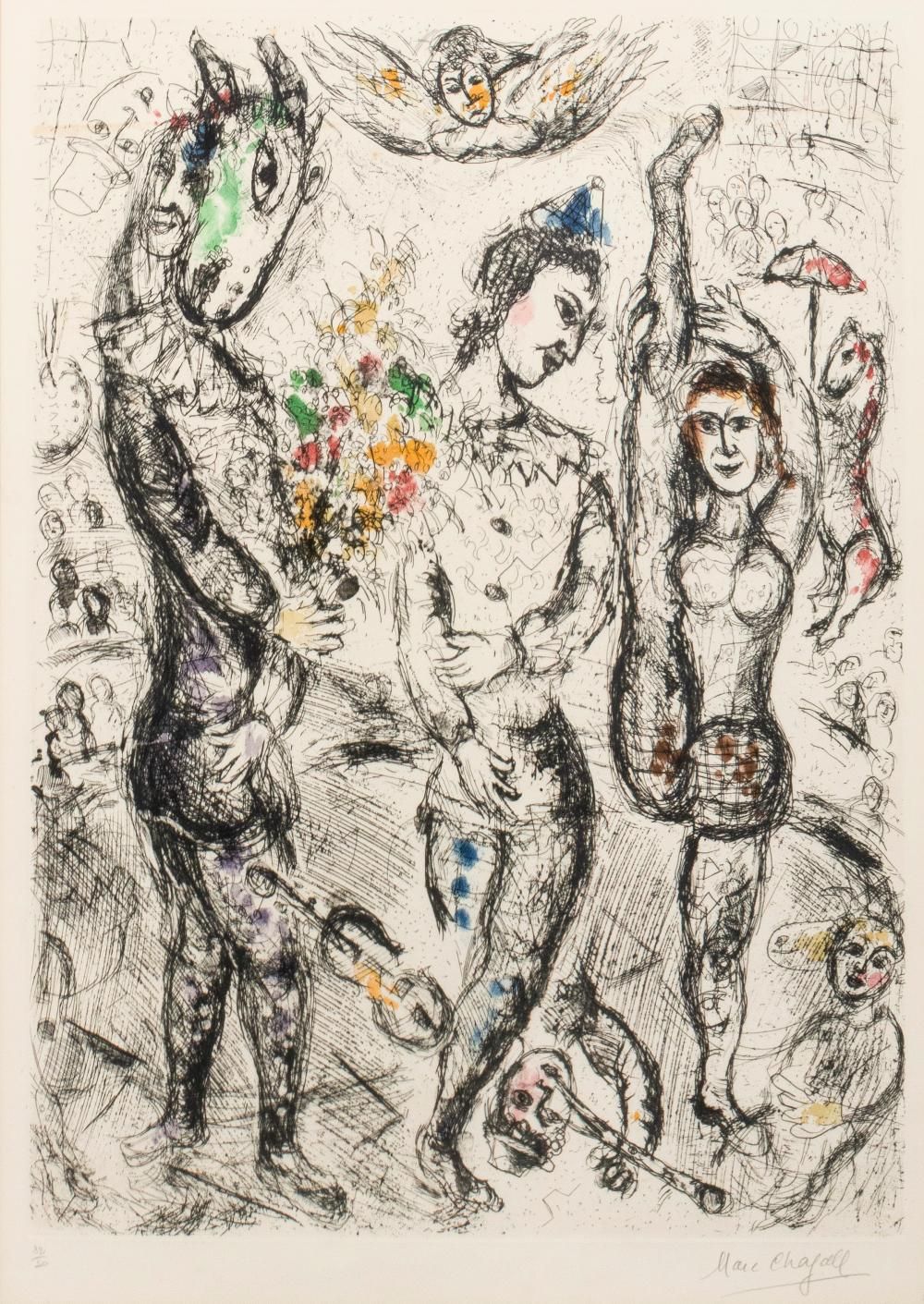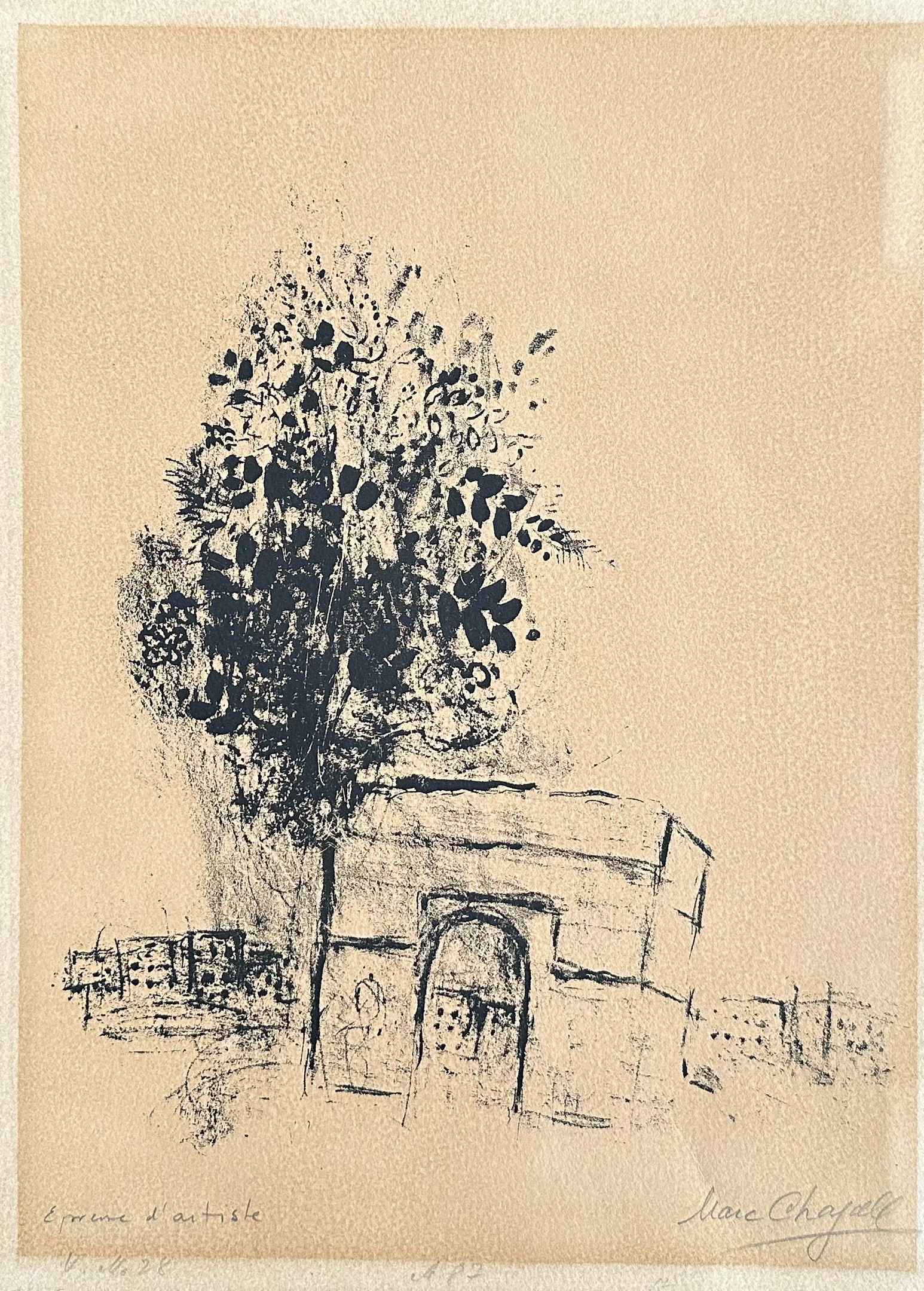
Marc Chagall
Marc Chagall studied art in Saint Petersburg and later moved to Paris in 1910, where he immersed himself in the city’s vibrant avant-garde scene. Influenced by cubism, fauvism, and symbolism, Chagall developed a unique visual language that blended modernist innovation with personal and folkloric themes.
Chagall is best known for his dreamlike, poetic imagery that fuses fantasy, memory, and symbolism. His work often features floating figures, animals, lovers, musicians, and scenes from village life, rendered in luminous color and fluid composition. Though associated with several movements, including surrealism and expressionism, Chagall’s style was highly individual and emotionally charged, shaped by his deep connection to his cultural heritage and his own imagination. He worked across many media, including painting, stained glass, ceramics, illustration, and stage design.
Among Chagall’s most iconic works are I and the Village (1911) and his series of Biblical illustrations. He also created monumental stained-glass windows, such as those for the Hadassah Medical Center in Jerusalem and the Chapelle du Rosaire in Vence. Major retrospectives of his work have been held at the Museum of Modern Art (New York), the Grand Palais (Paris), and the Art Institute of Chicago.
Collected by major institutions and notable private collectors:
— National Gallery of Art, Washington, D.C.— Dallas Museum of Art
— Musée National Marc Chagall
— Centre Pompidou
— Stedelijk Museum
Notable sales and auction records:
— Les Amoureux, USD 28,4 million at Sotheby's, New York, 2017— Le Grand Cirque, USD 16 million at Sotheby's, New York, 2017
— Au-dessus de la ville, USD 15,6 million at Sotheby's, New York, 2023
Artworks and Paintings
Biography and Artistic Career Highlights
Marc Chagall was born on July 6, 1887, in Vitebsk, into the family of a modest herring merchant. His childhood took place in a traditional environment, which later had a strong influence on his artistic imagination and symbolism. Already in his youth, he showed a talent for drawing, which led him to art workshops and schools.
1906–1907 — studied in St. Petersburg at the School of the Society for the Encouragement of the Arts, then with Léon Bakst at the Zvantsev School.
1910–1914 — lived and worked in Paris; became acquainted with the avant-garde circle and was influenced by Cubism and Fauvism. Created vivid works combining European artistic innovations with memories of Vitebsk.
1915 — married Bella Rosenfeld, who became the artist’s muse.
1918–1920 — director and co-founder of the Vitebsk People’s Art School.
1920 — moved to Moscow, worked on stage designs for the Jewish Theater.
1922 — emigrated to Germany; worked in Berlin, then returned to France.
1923–1941 — lived in France, illustrated books, and created a series of illustrations for the Bible.
1941–1948 — lived in New York, worked on monumental paintings, and designed stage sets and stained-glass windows.
1948 — returned to France, settled in Vence, on the French Riviera.
1950–1970s — created large-scale projects: stained-glass windows for cathedrals, the UN, and synagogues; stage designs for the Paris Opera and Lincoln Center. The artist achieved worldwide fame and recognition.
1973 — the Marc Chagall Museum opened in Nice, dedicated to his biblical cycles.
On March 28, 1985, Marc Chagall died in Saint-Paul-de-Vence, France, leaving behind a vast artistic legacy that became a symbol of the fusion of Jewish tradition and European modernism.



